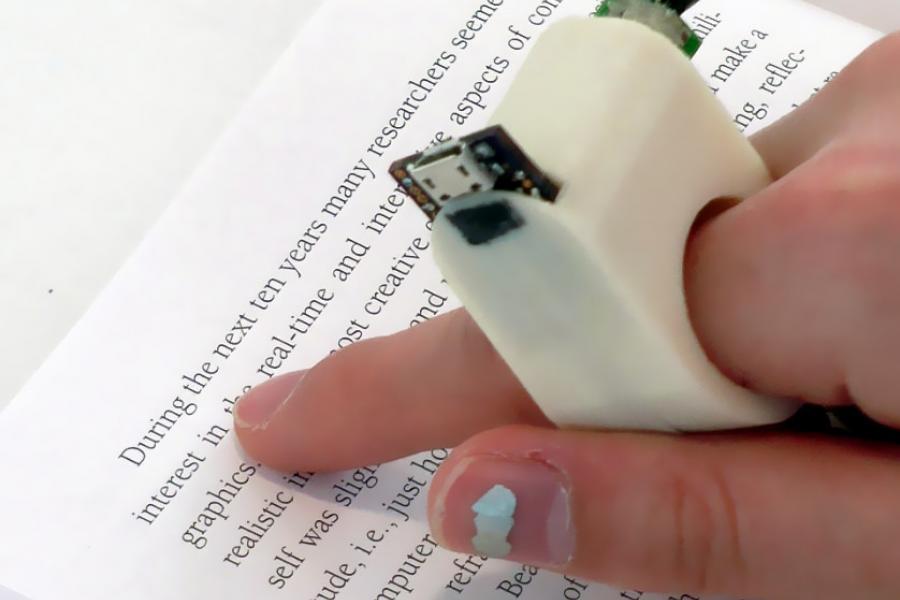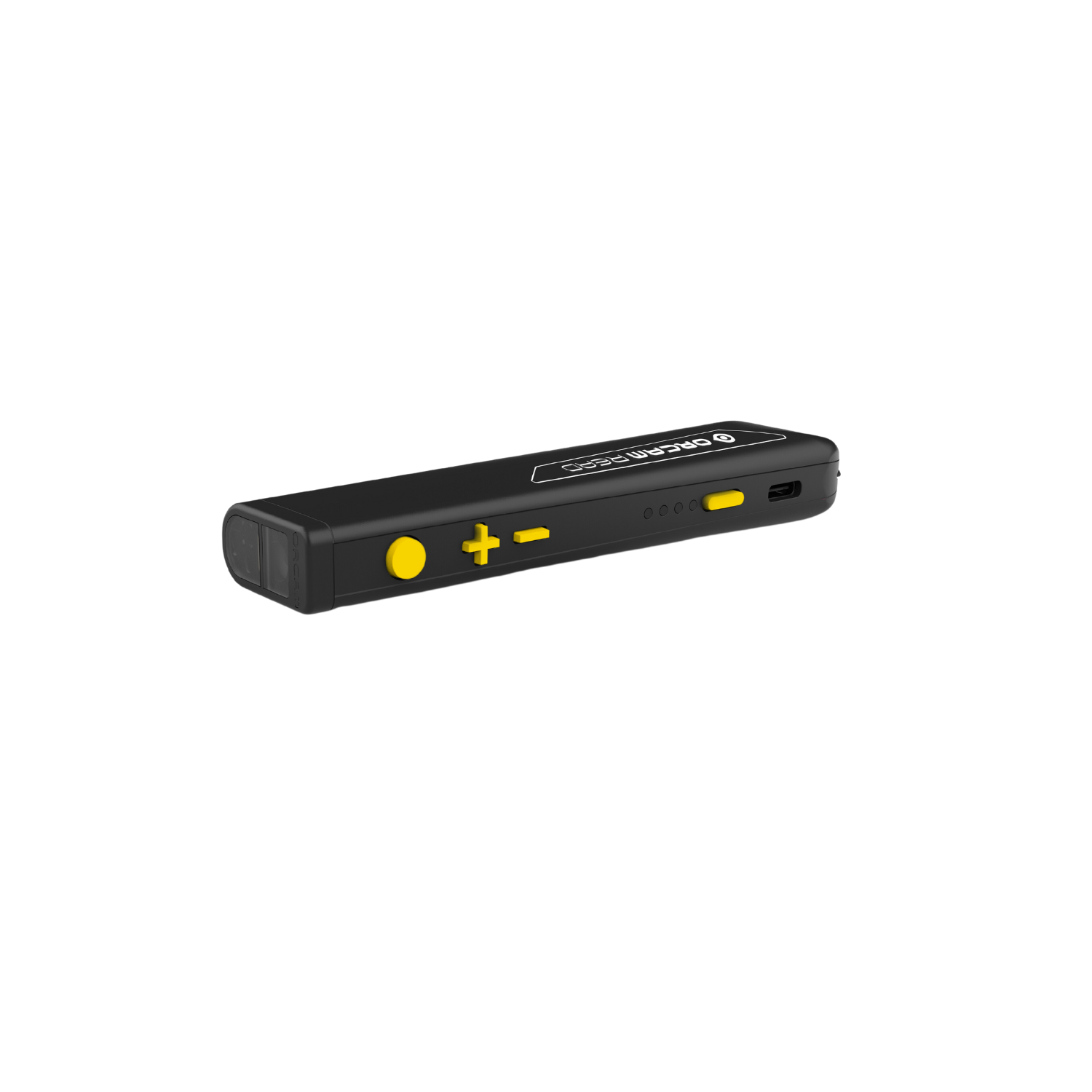Braille Displays and Notetakers: Essential Tools for Learning and Work
Braille Displays and Notetakers: Essential Tools for Learning and Work
Blog Article
Discover Cutting-edge Devices Developed for the Visually Impaired
The growth of innovative tools for the aesthetically impaired stands for a considerable innovation in accessibility and self-reliance. Technologies such as smart glasses with AI capacities and mobile applications made to give auditory summaries are reshaping daily experiences for individuals. In addition, wearable devices that employ haptic feedback improve environmental awareness, while modern-day Braille developments use new ways to involve with message. As these devices proceed to develop, their effect on the lives of those with aesthetic problems raises important concerns concerning the future of inclusivity and autonomy in numerous aspects of life. What lies in advance in this technological landscape?
Smart Glasses for Navigating

Smart glasses made for navigation are transforming the means aesthetically impaired people engage with their setting. These advanced gadgets use a mix of video camera innovation, man-made intelligence, and acoustic feedback to supply real-time info concerning surroundings. By using barrier discovery systems, wise glasses can signal individuals to possible risks, making it possible for safer mobility in both familiar and unfamiliar settings.
The combination of GPS technology better boosts navigation capacities, enabling individuals to obtain auditory instructions as they move. This hands-free strategy not just cultivates freedom yet likewise encourages visually impaired individuals to navigate city landscapes with enhanced self-confidence. Additionally, numerous wise glasses are outfitted with attributes that determine sites and street indications, offering contextual info that improves the user experience.
Moreover, the advancement of these gadgets is consistently advancing, with firms functioning to boost the precision of object recognition and increase the variety of navigational functions. As wise glasses come to be extra inexpensive and accessible, they hold the possible to substantially transform day-to-day life for visually damaged users. Ultimately, these ingenious tools represent an important step towards inclusivity, offering improved wheelchair and a higher sense of autonomy for individuals browsing the globe around them.
%20(1).webp)
Mobile Apps for Daily Living
How can mobile applications enhance the every day lives of visually impaired people? Mobile apps are revolutionizing the way visually damaged customers navigate their environments, manage everyday jobs, and accessibility information. These applications offer necessary support with various functionalities, fostering self-reliance and boosting lifestyle.
Numerous cutting-edge mobile applications are developed particularly for daily living. Apps like Be My Eyes attach visually damaged individuals with sighted volunteers by means of video clip telephone calls, allowing them to receive real-time assistance with jobs such as reviewing tags or browsing unknown spaces. Seeing AI, created by Microsoft, uses man-made knowledge to explain surroundings, reviewed text, and identify things, properly changing a mobile phone into a powerful tool for daily aid.
Furthermore, navigation applications tailored for the visually impaired, such as Aira and BlindSquare, use audio-based directions and ecological info, enabling customers to traverse their surroundings safely and with confidence. Past navigating and instant aid, mobile apps likewise sustain organization and job administration, with functions that aid individuals establish reminders, develop order of business, and track visits. In recap, mobile applications function as indispensable sources, empowering aesthetically impaired people to lead even more independent and meeting lives.
Wearable Technologies for Assistance
Empowerment with technology is progressively evident in the world of wearable gadgets made to aid aesthetically impaired individuals. These ingenious tools incorporate flawlessly right into day-to-day life, boosting navigating and supplying vital responses to individuals. For circumstances, smart glasses geared up with electronic cameras can recognize faces and check out message aloud, enabling customers to interact more confidently in social and professional settings.
An additional remarkable innovation is the usage of haptic eye test and glasses near me comments systems in wearable gadgets. These systems utilize vibrations or various other responsive signals to share info regarding the user's setting, such as challenges or changes in terrain, boosting wheelchair and security. Wearable technologies additionally consist of wristbands that attach to mobile phones, informing individuals to notifications with subtle resonances, therefore boosting connection without reliance on aesthetic hints.
As these technologies proceed to develop, they are not just enhancing self-reliance for visually damaged people but additionally promoting a better sense of incorporation in society. By bridging the void in between challenges faced in everyday living and the possibility for freedom, wearable innovations act as crucial tools in the mission for equal rights and empowerment for those with visual problems.
Audio Summary Devices
Sound description tools play a vital function in enhancing accessibility for aesthetically damaged individuals, supplying them with the capacity to engage with aesthetic media. Mobility aids for visually impaired users. These devices use narrated summaries of vital visual aspects in movies, television programs, and live performances, making certain that users can fully understand the context and feelings conveyed through visuals
Audio description can be incorporated into various platforms, including streaming solutions, cinema testings, and live theater. Numerous prominent streaming services currently consist of audio summary as an access function, enabling visitors to select it quickly. Along with conventional media, specialized apps likewise exist, providing audio summaries for art events, galleries, and various other social occasions.
The performance of audio summary rests on the ability of the narrators, that need to convey visual details succinctly without interfering with the original audio. Advancements in this area are likewise leading the means for more personalized experiences, where users can adjust the degree of information and pacing according to their preferences.
Braille Innovations and Devices
Braille devices and developments have significantly changed the means aesthetically damaged individuals communicate with message and details. Modern innovations have actually led to the growth of versatile tools that enhance literacy and independence amongst customers.
Moreover, portable Braille notetakers combine traditional Braille input with contemporary capabilities, assisting in note-taking, rimless glasses organizing, and record editing and enhancing on the go. Wearable technology for low vision. These compact tools commonly include text-to-speech abilities, connecting the void between Braille and acoustic details
Additionally, cutting-edge Braille printers have actually arised, enabling users to produce Braille tags, records, and academic materials successfully. This access promotes higher involvement in professional and instructional atmospheres, inevitably promoting inclusivity.
In addition, study into clever Braille technologies proceeds to broaden. Devices that incorporate expert system are being explored to give real-time navigation support and contextual details, improving the customer experience in diverse setups. In general, these advancements reflect a commitment to empowering visually impaired people via innovation, guaranteeing they can conveniently access and engage with the world around them.

Conclusion
The innovation of ingenious devices for the visually impaired significantly improves freedom and high quality of life. These technologies not just foster higher incorporation however additionally advertise autonomy in everyday tasks, eventually contributing to a more equitable and available culture for aesthetically damaged individuals.
As wise glasses come to be more budget friendly and available, they hold the potential to significantly transform day-to-day life for visually damaged customers. Mobile applications are transforming the way aesthetically damaged users navigate their atmospheres, handle day-to-day jobs, and access info. Applications like Be My Eyes attach aesthetically damaged customers with sighted volunteers via video clip telephone calls, permitting them to receive real-time support with jobs such as reading labels or navigating unfamiliar spaces.Additionally, navigation applications customized for the visually impaired, such as Aira and BlindSquare, offer audio-based directions and environmental information, enabling users to traverse their Bonuses surroundings securely and with confidence.The improvement of ingenious tools for the visually impaired considerably improves self-reliance and high quality of life.
Report this page